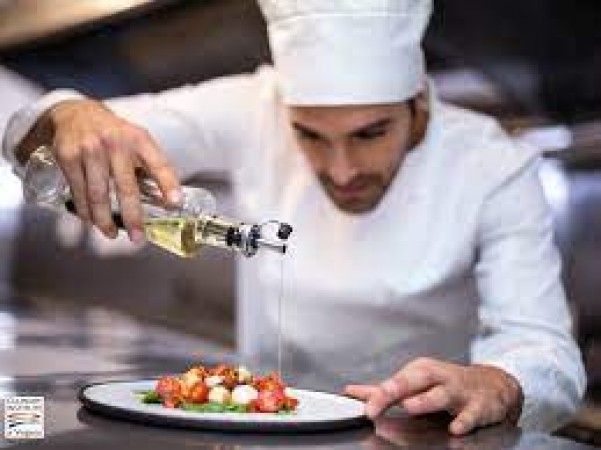
In the world of gastronomy, culinary arts and cooking techniques play a crucial role in creating exquisite dishes that delight our taste buds. Whether you are an aspiring chef or a passionate home cook, understanding the fundamentals of the culinary arts and mastering various cooking techniques can elevate your skills in the kitchen. This article aims to provide you with a comprehensive overview of the culinary arts and highlight some essential cooking techniques that every aspiring chef should know.
1. Intro: In the world of gastronomy, culinary arts and cooking techniques play a crucial role in creating exquisite dishes that delight our taste buds. Whether you are an aspiring chef or a passionate home cook, understanding the fundamentals of the culinary arts and mastering various cooking techniques can elevate your skills in the kitchen. This article aims to provide you with a comprehensive overview of the culinary arts and highlight some essential cooking techniques that every aspiring
chef should know. ction to Culinary Arts: The culinary arts encompass a wide range of skills and techniques used in the preparation, cooking, and presentation of food. It is a discipline that combines creativity, precision, and knowledge of ingredients to create delicious and visually appealing dishes. Culinary arts include various aspects such as culinary techniques, food science, nutrition, menu planning, and kitchen management.
2. The Importance of Culinary Education: Obtaining a culinary education is essential for aspiring chefs who want to excel in their craft. Culinary schools provide a structured learning environment where students can acquire foundational knowledge and practical skills. Through hands-on training and theoretical classes, culinary students learn about food safety, menu planning, flavor profiles, and culinary techniques. Additionally, culinary education provides valuable networking opportunities and exposure to industry professionals.
3. Knife Skills and Cutting Techniques: One of the fundamental skills every chef must master is proper knife skills and cutting techniques. A sharp knife and correct cutting methods not only ensure safety but also enhance the efficiency and precision of food preparation. Essential cutting techniques include julienne, dice, chop, mince, and brunoise, each suitable for different ingredients and cooking styles.
4. Understanding Heat and Temperature Control: Mastery of heat and temperature control is crucial to achieving desired cooking results. Different cooking methods require specific heat levels to maximize flavor development and texture. Understanding the concept of heat transfer and how to adjust heat sources like stovetops and ovens accordingly enables chefs to execute recipes flawlessly.
5. Essential Cooking Methods-
5.1 Sautéing and Stir-Frying: Sautéing and stir-frying are quick and versatile cooking methods that involve cooking food in a small amount of oil over high heat. These methods preserve the natural flavors and textures of ingredients while creating deliciously caramelized surfaces. Sautéing is commonly used for delicate foods like fish and vegetables, while stir-frying is popular in Asian cuisine.
5.2 Roasting and Baking: Roasting and baking involve cooking food in an oven by surrounding it with dry, hot air. These methods are ideal for larger cuts of meat, poultry, and vegetables. Roasting creates a flavorful crust on the surface, while baking is commonly used for cakes, pastries, and bread.
5.3 Grilling and Broiling: Grilling and broiling are high-heat cooking methods that use direct radiant heat from above or below the food. Grilling is often associated with outdoor cooking and imparts a distinct smoky flavor, while broiling is performed in an oven, producing caramelization and browning.
5.4 Braising and Stewing: Braising and stewing involve cooking food slowly in a liquid at low temperatures. These methods are perfect for tougher cuts of meat, as the extended cooking time helps tenderize the fibers and infuse flavors. Braising is typically done in the oven, while stewing is done on the stovetop.
5.5 Steaming and Poaching: Steaming and poaching are gentle cooking methods that preserve the delicate texture and natural flavors of ingredients. Steaming involves cooking food with the steam generated from boiling water, while poaching involves submerging food in a simmering liquid. These techniques are commonly used for seafood, vegetables, and dumplings.
6. The Art of Flavoring and Seasoning: Mastering the art of flavoring and seasoning is essential for creating well-balanced and delicious dishes. Chefs utilize various ingredients, such as herbs, spices, acids, and salts, to enhance flavors and elevate the dining experience. Understanding flavor profiles, experimenting with different combinations, and developing a refined palate are key components of this culinary skill.
7. Sauces, Stocks, and Soups: Sauces, stocks, and soups form the foundation of many culinary creations. Sauces add richness and complexity to dishes, while stocks serve as the base for soups, stews, and sauces. Knowing how to prepare classic sauces like hollandaise, béchamel, or demi-glace, as well as making flavorful stocks and hearty soups, is essential for any chef.
8. Food Presentation and Plating Techniques: Visual appeal is a vital aspect of the culinary arts. Food presentation and plating techniques involve arranging food on a plate in an aesthetically pleasing manner. Chefs employ various techniques like garnishing, layering, and using contrasting colors and textures to create visually striking dishes that stimulate both the eyes and taste buds.
9. Culinary Trends and Innovations: The culinary world is constantly evolving, with new trends and innovations emerging regularly. Chefs and culinary professionals need to stay updated with the latest industry developments, such as plant-based cooking, molecular gastronomy, and fusion cuisine. Embracing innovation and experimenting with new techniques and ingredients allow chefs to push boundaries and create unique dining experiences.
Conclusion: Culinary arts and cooking techniques are a harmonious blend of creativity, skill, and knowledge that elevate the culinary experience. From mastering knife skills to understanding various cooking methods, a well-rounded culinary education empowers chefs to create exceptional dishes. By combining passion, practice, and continuous learning, aspiring chefs can embark on a rewarding journey in the world of gastronomy.
Fashion and Identity: Unveiling the Power of Personal Style in Self-Expression
Fashion and Technology: Exploring the Exciting Fusion Shaping the Future of Style"
Street Style: Unleashing Your Fashion Creativity on the Streets